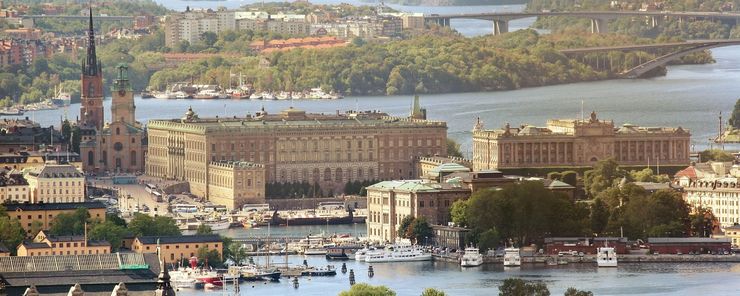From the 12th to 17th of June 2022, the conference on defects in solids for quantum technologies was held in Stockholm, Sweden, at the AlbaNova University Center of Stockholm University. The final scientific program of the conference lasted for five full days, included 34 invited talks, 48 contributed talks, and a poster session with 30 posters, all-in-all having 119 participants from 21 countries. The event was sponsored jointly by the Psi-k organization and CECAM, and partly funded by the organizing universities of Linköping University and Stockholm University with funds from the Knut and Alice Wallenberg Foundation.

The conference covered the state-of-the-art advances in the study of defects in semiconductors and the quantum properties they exhibit which are favorable for applications in future information, communication, and sensing technology. Considerable effort has been spent to develop a basic unit of quantum information processing (or qubit) from different individual quantum systems, such as single atoms or ions trapped in a crystal lattice, single Josephson superconducting devices, single photons emitted from quantum dots or single photons/spins associated with point defects in semiconductors. Quantum states due to point defect in wide band gap semiconductors may realize single photon sources and quantum bits that can be harnessed in quantum information processing and nanoscale sensor applications at room temperature. The leading contender is the nitrogen-vacancy center in diamond that may be considered as a robust quantum bit. However, the possibility to realize bright single-photon emitters and single spin sources (single defects with spin) in SiC, Si, and hBN have been demonstrated. Researchers face many materials science challenges in fabricating point defect quantum states with favorable intrinsic properties that can be perturbed by other defects either in bulk or at the surface of the devices. First principles theoretical simulations have been demonstrated as an essential tool in understanding the underlying physics of these atomic scale systems as well as in identification of potential new quantum bits and single photon emitters in wide band gap semiconductors. Therefore, tight collaboration of experimental research and atomistic simulations is essential for a rapid progress in the field.
The conference program covered a vast array of topics covering the field, e.g. first-principles characterization, growth and defect fabrication, and sensing in biological applications in-vivo. The study of excited properties of point defects is a notoriously difficult task due to sizable supercell models used for modelling individual defects as well as the limitations of DFT based approaches for predicting excited state properties. In order to evaluate the true potential of these methods, comprehensive benchmarks are needed that requires the establishment a benchmark set of experimentally well characterized color centers in various wide band gap semiconductors. High throughput computational and experimental studies have been unanimously identified as a promising direction of future development. Handling and analyzing the data pose challenges that requires a versatility and unified solution from the community. Especially, integration of experiential data together with computational results has needed more attention. Experimental colleagues have not to been aware of the solutions developed by the computational physics community, therefore the crosstalk between these communities needed to be further strengthened. Meanwhile, the advance of experimental topics both for defect investigation and applications cover a range both wide and deep, with a few topics from the program being NMR with spin defects, deterministic fabrication of photonics and implantation defects, photoionization and recombination, electrical readout, automated experimental characterization and sensing paramagnetic free radicals in-vivo. It was time to bring all of these topics together in one place to work out the open questions and streamline the progress of the field as a whole.
The days were filled with invited and contributed talks, from early morning to early evening. There was a poster session held in the evening of the third day, while the fourth evening hosted a visit to the Swedish Vasa Museum and a dinner at the open air museum Skansen to allow for socialization and discussion of current and future projects.
Links to detailed info of the conference (schedule, participants and abstract available after navigation)
https://www.cecam.org/workshop-details/1125
Prizes
A poster prize was sponsored by the De Gruyter academic publishing group, which was awarded to two brilliant researchers: Di Liu from the University of Stuttgart and Hans Beukers from University of Delft. The winners were chosen by the Prize committee composed of Prof. Sophia Economou (Virginia Polytechnic Institute), Prof. Lee C. Basset (University of Pennsylvania) and Prof. Vladimir Dyakonov (University of Würzburg).
Organizers
Igor Abrikosov (Linköping University)
Mohamed Bourennane (Stockholm University)
Vanya Darakchieva (Linköping University)
Adam Gali (Budapest University of Technology and Economics)
Viktor Ivády (Linköping University)
Yuan Ping (University of California, Santa Cruz)
Nguyen Son (Linköping University)
with great support from a team of local organizers
Oscar Bulancea Lindvall (Linköping University)
Joel Davidsson (Linköping University)
William Stenlund (Linköping University)
General remarks
Being one of the first in-person conferences soon after the global pandemic of COVID-19, the conference had the pleasure of a vast majority of participants being present at the venue.
Conclusions and prospects
Based on numerous feedbacks from the participants, people were pleased to meet and discuss in person once again, and we concluded that the DSQT22 conference goals were achieved. Fulfilment of the meeting objectives ensured the benefits of the research community and promoted numerous international research collaborations. The interdisciplinary character of the conference helped finding solutions for challenging scientific questions in the field of defects in wide-band gap semiconductors for the next generation quantum technologies. Majority of the participants agreed to organize the next DSQT workshop in 2024.
